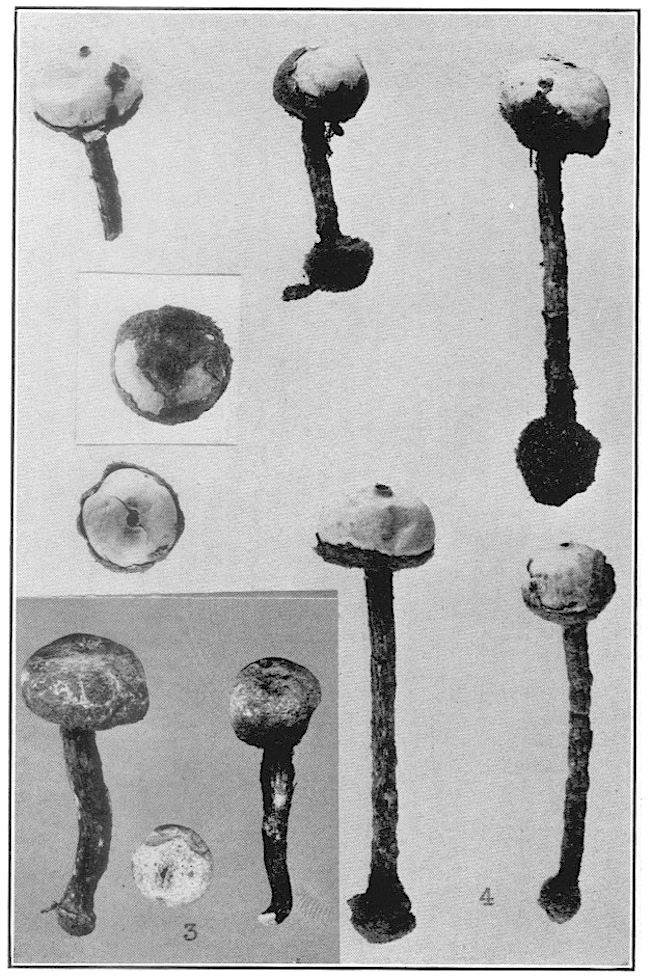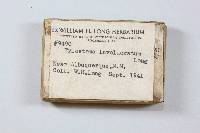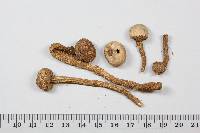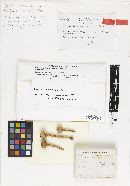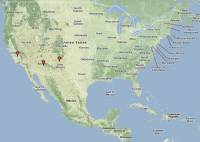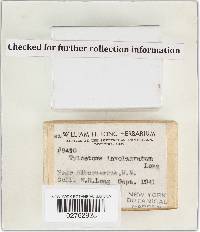
|
|
|
|
Family: Agaricaceae
|
Wright J.E. 1987. Bibliotheca Mycologia 113: 129. Tulostoma involucratum Long (Fig. 76; Pls. VI: 2; XLIII: 4; XLVI: 7) - Mycologia 36: 330-332, fig. 13. 1947. Etym.: The name refers to the involucre-like aspect of the exoperidium in some specimens. Spore-sac globose, up to 25 x 12 mm, easily separating from the stem. Exoperidium typically membranous, white within, separable, dark on the outside; in some specimens totally persistent, in othersfalling off. Endoperidium cream-colour to ochraceous, finally smooth. Mouth tubular, large up to 3 mm diam, in some specimens elliptic, with margin recurved. Socket conspicuous, separated from the stem, membrane thick and lacerated, free in some specimens. Gleba ochraceous ferrugineous. Stem up to 60 x 6 mm, slightly tapering towards the base, or equal, squamose (scales Battarraea-like), dark brown to concolorous; one specimen exhibited a conspicuous volviform structure. Spores globose to subglobose or ellipsoid, apiculate, echinulate under L.M., vacuolate, 4.6-5.7 µm diam. Under SEM the ornamentation appears formed by large compound verrucae, some anastomosed, much appressed. Capillitium subhyaline, branched and septate; threads thick-walled and lumen lacunar, slightly swollen at the uncoloured to slightly brownish, infrequent septa, disjointable; 3.3-6.1 µm diam. Habitat: sandy soil in arid regions. Distribution: North America: SW United States. South America: Argentina, Atlantic seaboard of Patagonia. Africa: South Africa. Holotype: United States: New Mexico, Luna Co., 10 mi W of Dening, leg. Long & Stouffer, 13.IX.1941 (Herb. Long 9650, BPI!). Illustration: Long (op.cit.). |

